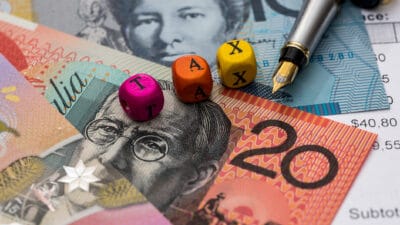The 2023 federal budget is in.
Among the key measures, Treasurer Jim Chalmers unveiled $14.6 billion in spending to assist households and small businesses with cost of living increases.
Millions of largely lower-income Aussies stand to benefit from that part of the 2023 federal budget.
Among the policies, there is a $40 fortnightly boost to JobSeeker, Youth Allowance, and Austudy, as well as $500 of rebates to five million low-income households as part of the $1.5 billion Energy Relief Fund.
However, more stimulus spending from the 2023 federal budget isn't going to help Australia tamp down its stubbornly high inflation.
Which means the odds of yet another interest rate increase from the Reserve Bank of Australia (RBA) have just gotten a lot higher.
ASX 200 shares could face renewed pressure in June
That's something to keep an eye on when investing in S&P/ASX 200 Index (ASX: XJO) shares.
As you're likely aware, the RBA hiked rates for the 11th time in 12 months on 2 May. That took Australia's official cash rate to 3.85%. Only one year earlier, the cash rate stood at an all-time low of 0.10%.
Immediately following the RBA's unexpected interest rate boost, the ASX 200 tumbled 1%.
The RBA's next interest rate decision will be announced on 6 June.
Here's what these experts are saying on the 2023 federal budget's likely impact on the central bank's upcoming rate calls.
Will the 2023 federal budget usher in another RBA rate hike?
Up first, we have Treasurer Jim Chalmers.
Chalmers, as you'd expect, doesn't believe the 2023 federal budget is inflationary. According to Treasury forecasts, Australia's inflation rate will drop back into the RBA's target range of 2% to 3% in 2025.
But the analysts at Citi don't concur.
While measures like the Energy Relief Fund, and subsidies for child care and rental assistance, will decrease headline inflation, the broker pointed out that this will also put more money in households' pockets.
According to Citi (courtesy of The Australian Financial Review), "Therefore, the impact on underlying inflation is ambiguous, and risks remain tilted to the upside because households could spend more because of subsidies."
Citi reaffirmed its forecast for another 0.25% rate hike from the RBA in June.
BetaShares chief economist David Bassanese went a step further, calling the 2023 federal budget "unambiguously expansionary".
With lower-income households generally more prone to spend extra income than save it, Bassanese said the budget is likely to fuel consumer demand rather than slow it.
"Hence, this is why it would have been beneficial to introduce other offsetting budget tightening measures at the same time," Bassanese said.
BetaShares believes the budget has increased the chances ASX 200 investors will see at least one if not two more rate hikes from the RBA this year.
Joining the rate hawks in the wake of the 2023 federal budget is Goldman Sachs. With many households' disposable incomes boosted by the budget and Australia's immigration levels seeing the population swell, Goldman expects a 0.25% rate lift in July, or possibly in June.
UBS also believes the RBA will lift rates by another 0.25% at least one more time this year, most likely in July.
"Indeed, despite a rapid fiscal consolidation of the budget position in 22/23, the overall stance of the budget outlook is still stimulatory," UBS economist George Tharenou said (quoted by the AFR).
That tends to be the thing with federal budgets. They give with one hand and take away with the other.
At the end of the day, after all, it's the taxpayers' money they're reallocating.









